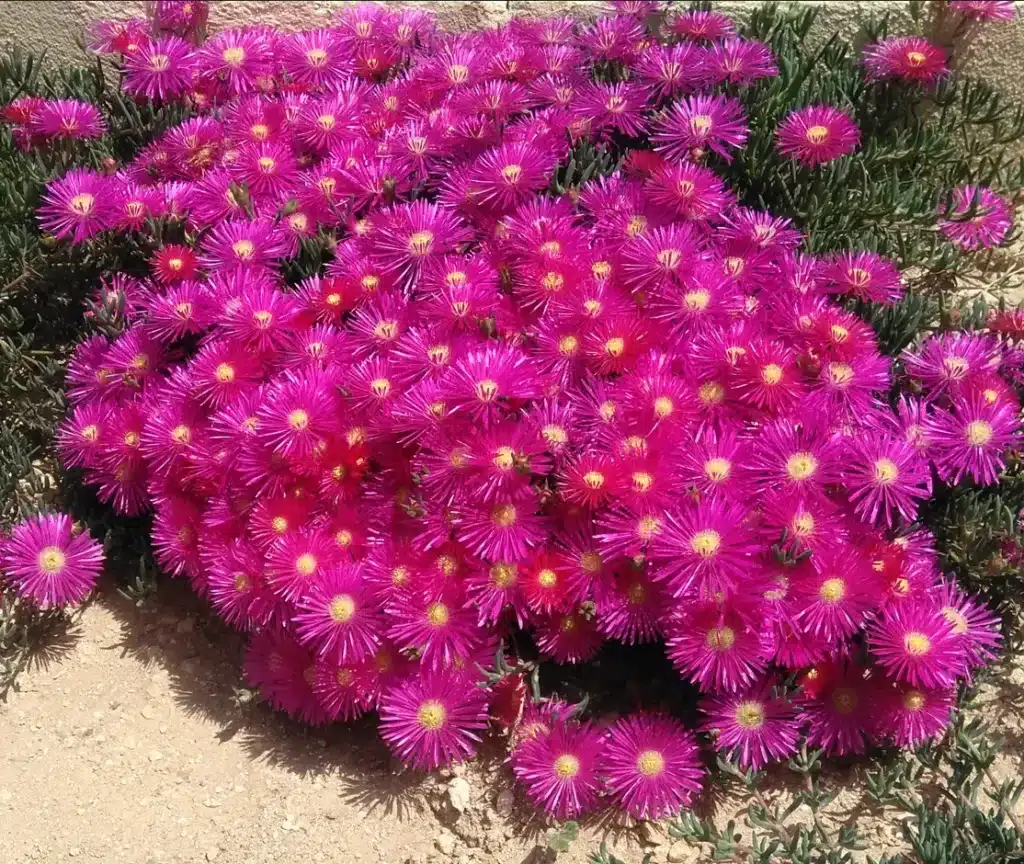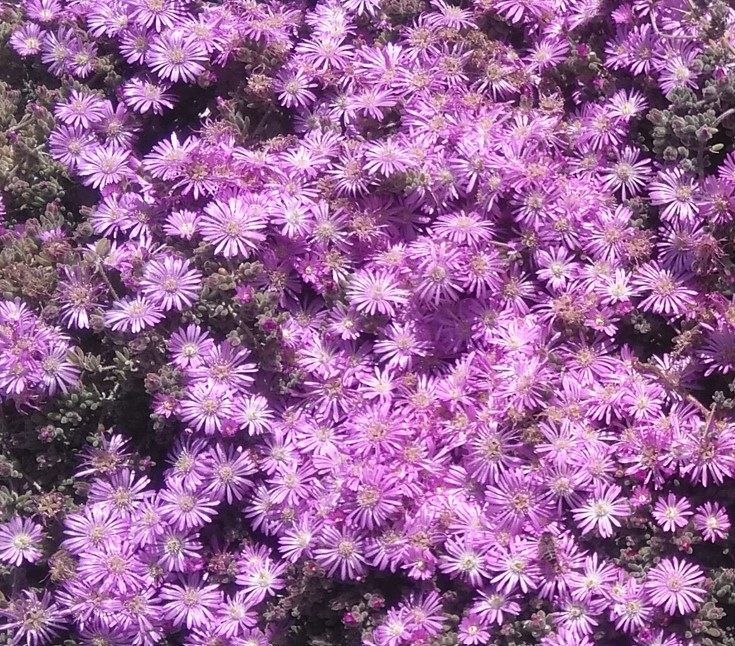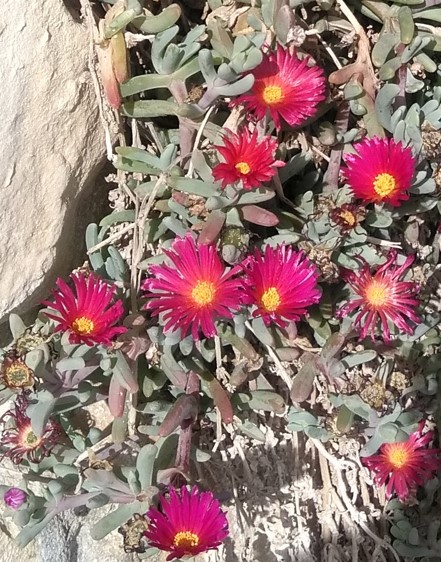FAQ - Ice plants Delosperma
Most frequent questions and answers
Ice plants prefer a sunny location in well-draining soil. Some are pretty hardy but will struggle with wet, dark and cold winters.
It very much depends on your subjective opinion. They vary in size and shape, and the flowers come in many different colors. There is a great variety, and certainly something suitable for everyone’s particular need.
According to Universal Journal of Agricultural Research, Delosperma Reseii´s leaves contain aqueous extract with anti-inflammatory and anti-ulcer activity. This article from healthbenefitstimes.com claims Mesembryanthemum crystallinum has a wide range of health benefits.
It is easier to have an Ice plant outdoors since it likes to spread out fairly quickly. Although, a smaller in a pot is perfect för a sunny spot indoors. Perhaps the smallest Ice plant, Delosperma sphalmanthoides is perfect for a small pot indoors.
Sprinkle seed on top of moist soil in lots of daylight. The seed will germinate after roughly a couple of weeks. Keep the temperature fairly warm around 60-70°F/ 21°. C




